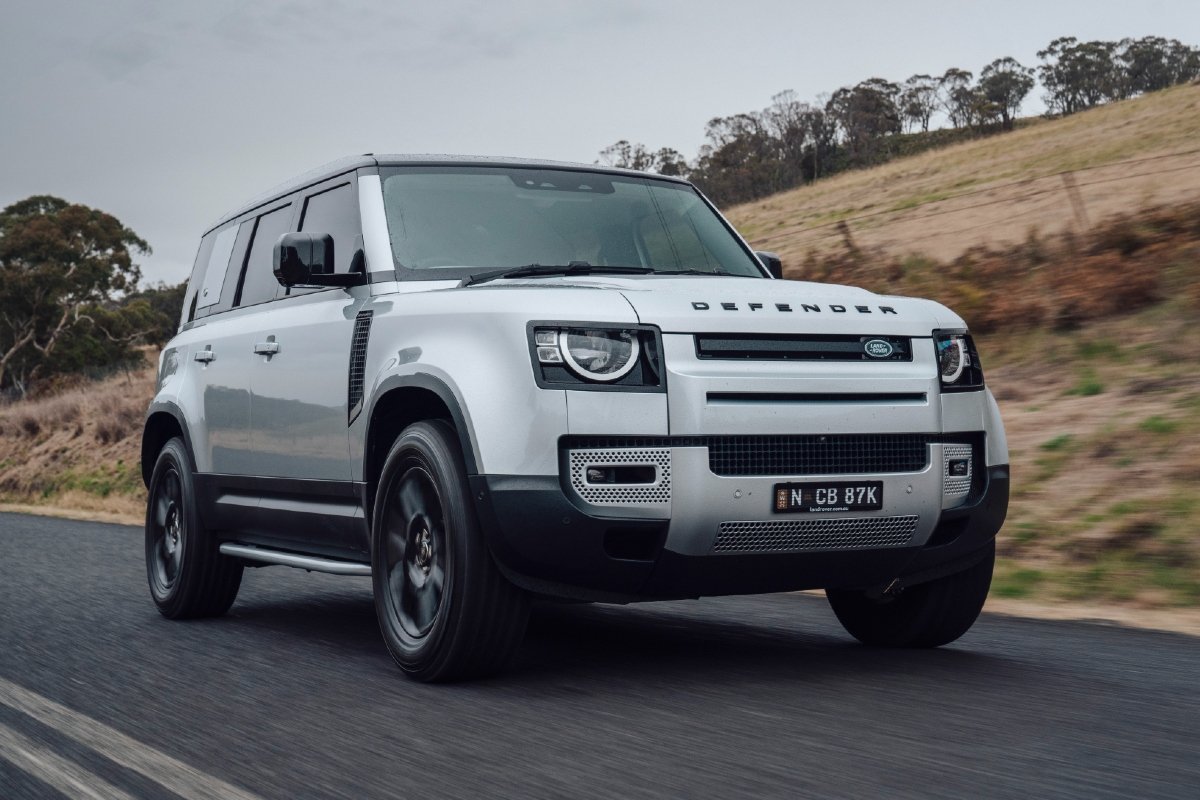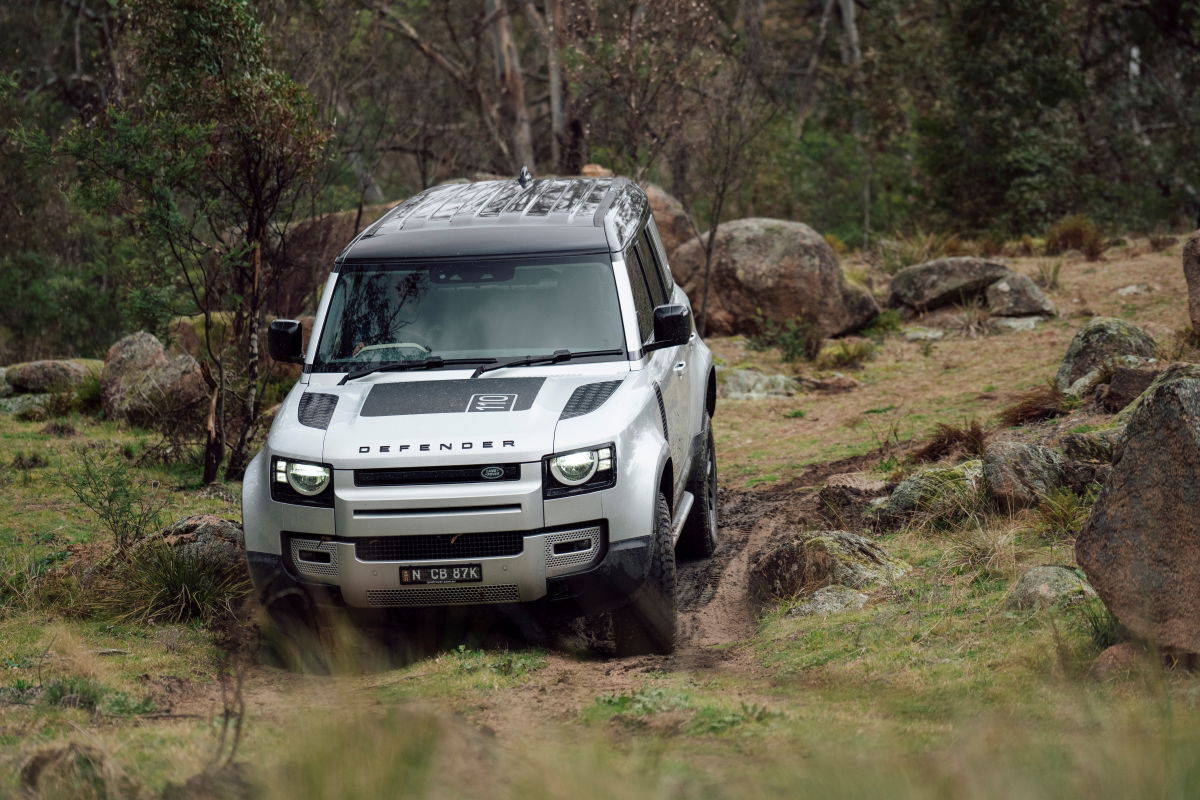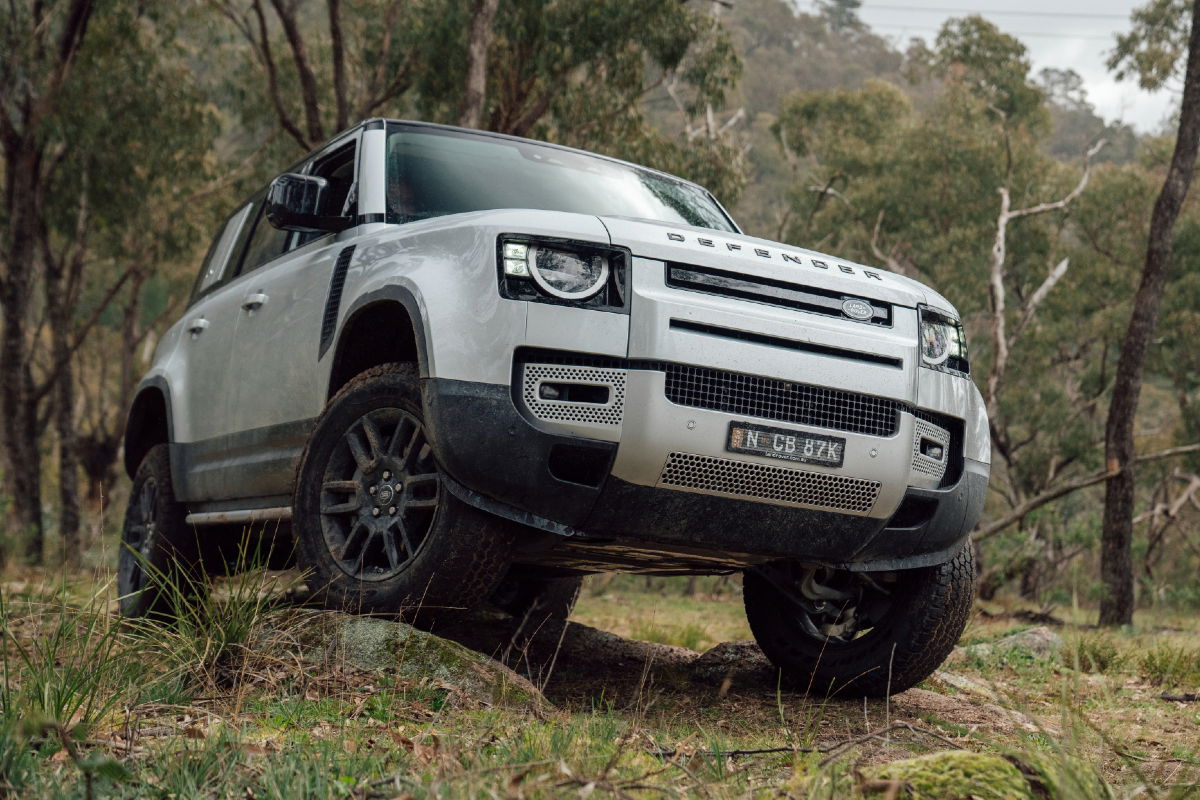
What is it?
One of the best-selling variants of the longer wheelbase, Land Rover Defender 110 range, the X-Dynamic HSE D300.
Arriving in 2020, this new-generation Defender replaced the old one that had been around for decades. That was a controversial move as the old Defender was much-loved for its simple, ladder-chassis design. The new one is based on the same aluminium-rich platform underpinning other Land Rovers such as the Discovery.
Land Rover offers the Defender in three lengths – 90, 110 and 130. We love the way the new Defender looks – tough, yet retro in a concept car kind of way.
ROAD TEST: 2023 Land Rover Defender 90 V8
Does it have any racing pedigree?

A Land Rover won the inaugural Dakar Rally in 1979. In the UK in 2024, there’s a one-make rally series comprised solely of short wheelbase new Defender 90 rally cars. A British brand called Bowler has been off-road racing wicked-up Defenders for decades. So yes, there’s plenty.
What’s under the bonnet?
There’s a 2997cc twin-turbo diesel inline-six, which Land Rover calls a mild hybrid. It’s mated to a ZF eight-speed torque converter automatic transmission, while there’s full-time all-wheel-drive. Power is 221kW at 4000rpm and torque, a hearty 650Nm from 1500rpm to 2500rpm.
Assisting off-road, there’s height adjustable air suspension and variable-locking rear and centre diffs, as well as Land Rover’s more advanced Terrain Response 2 system. There’s a low-range transfer case.
How does it handle?

The handling is okay, although this is a 2476kg vehicle at the end of the day, with all-terrain tyres. Even in Sport mode, it’s not something that exactly slices through corners, although it does have a decent crack at them.
It’s just a beautiful car, however, to drive everyday, with a smooth, torque-rich diesel powertrain and great ride quality. There’s plenty of power too, with Land Rover claiming 0-100km/h takes 7.0sec – decent for a vehicle this size.
Where would you most like to drive it?
To a campsite up some rutted track somewhere, through a pit of mud and then over a fjord, before a fast stint along some dirt road. Anywhere we can get it dirty, basically.
What’s the interior like?

You sit quite high, and there’s plenty of space. It has a sort of retro-modern look and a vibe almost like you wouldn’t feel too guilty hosing it out, but run your hand over a few surfaces and absorb it more deeply, and you might think twice about that – this is very much a luxury car.
There’s an 11.4-inch central touchscreen and 12.3-inch digital instrument cluster, as well as head-up display. There are lots of cool little details like the (probably fake) rivets on the doors, and little bits of deliberately exposed chassis.
The back seat has plenty of space and there’s a large boot. Our 110 test vehicle has seven seats but the third row is comically tight and eats almost entirely into the luggage compartment. If you envision regularly using the third row, it’s a no-brainer – get the longer Defender 130.
How much does the Land Rover Defender cost?
This model costs $121,570 before on-roads, but our test car came with a dizzyingly long list of options that saw the price creep to $147,810.
Would I buy one?

Yes. We love it. There’s something about this Defender that just gets under your skin. It presents a veneer of practicality and sensibility, but really it’s a luxury car in disguise.
Land Rover calls it a “mild hybrid” but it’s still thirstier than someone lost in the Simpson, using about 13.7L/100km during our testing.
Is it better than a Toyota Prado? Yes – it looks cooler, drives way better and has a significantly nicer, more modern interior. That’s even if it costs more and if we lived anywhere not near a Land Rover dealer, there’s minimal chance we’d buy one over a Toyota. This is comparing to the current Prado, however. The equation might change somewhat when the funky-looking new one arrives later this year.














Discussion about this post